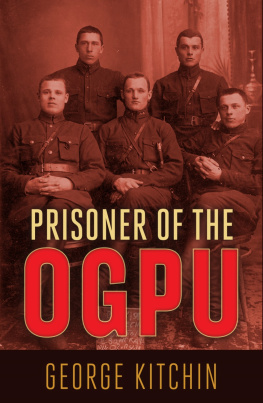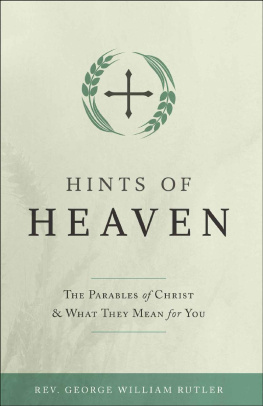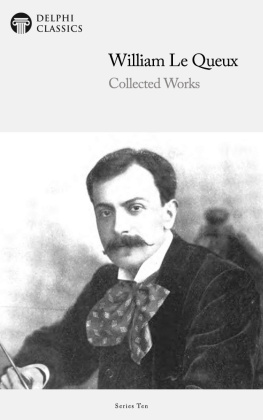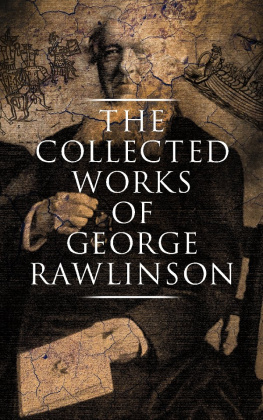NIHONGI


William George Aston (1841-1911), CMG, was one of the great pioneering European Japanologists of the nineteenth century. Born near Londonderry, Northern Ireland, he graduated BA at Queen's University of Ireland in 1862 and was later honored with the degree of Doctor of Literature. In 1864, he was appointed as interpreter to the British Consular Service in Japan and thereafter joined the staff of the British Legation, Tokyo. For twenty-five years, he held a series of official diplomatic and secretarial posts in Japan and Korea, turning every opportunity to studious use. His fluent understanding of the Japanese language led him to compile two innovative grammars, A Grammar of the Japanese Spoken Language and A Grammar of the Japanese Written Language, and to be the first European to publish a literal translation of the Nihongi. Since many ancient Japanese works are written in Chinese, Aston also mastered written Chinese. Among his many works of scholarship, two major books, A History of Japanese Literature and Shinto: The Way of the Gods, a study of the religions of Japan, remain important references.
Published by Tuttle Publishing,
an imprint of Periplus Editions (HK) Ltd.
with editorial offices at 364 Innovation Drive, North Clarendon,
Vermont 05759 USA
1972 by Charles E. Tuttle Co., Inc.
Library of Congress Catalog Card No. 70-152110
ISBN 978-0-8048-3674-6
ISBN 978-4-8053-1020-5 (for sale in Japan only )
First Tuttle edition published 1972
Printed in Singapore
Distributed by:
Japan
Tuttle Publishing
Yaekari Building, 3rd Floor
5-4-12 Osaki, Shinagawa-ku
Tokyo 141 0032
Tel: (81) 03 5437-0171; Fax: (81) 03 5437-0755
tuttle-sales@gol.com
North America, Latin America & Europe
Tuttle Publishing
364 Innovation Drive
North Clarendon, VT 05759-9436 U.S.A.
Tel: 1 (802) 773-8930; Fax: 1 (802) 773-6993
info@tuttlepublishing.com
www.tuttlepublishing.com
Asia Pacific
Berkeley Books Pte. Ltd.
61 Tai Seng Avenue, #02-12
Singapore 534167
Tel: (65) 6280-1330; Fax: (65) 6280-6290
inquiries@periplus.com.sg
www.periplus.com
11 10 09 08 6 5 4 3 2
TUTTLE PUBLISHING is a registered trademark of Tuttle
Publishing, a division of Periplus Editions (HK) Ltd.
Contents
THE Nihongi or Nihonshoki, is a Japanese classic of classics. It provides a panorama of early Japan when its culture was in formation. The authority and learning of the Nihongi has been heeded by generations of Japanese emperors, scholars, and historians. A tenth-century lady of the imperial court overheard her emperor say of Lady Murasaki, the authoress of Genji Monogatari, "Surely she must have studied the Nihongi." The influence of the Nihongi on Japanese literature is immense.
The Nihongi provides us with a first-hand story of Japan, a record of the beliefs and the character of its people, from the earliest times to the early Nara period. It concludes in the year A.D. 697, after the main impact of Chinese civilization. The Nihongi is mainly concerned with events in the Asuka period (A.D. 552-645), when Buddhism and the advanced culture of China entered Japan via Korea. Before this time were the ages of Jomon and Yayoi, mysterious then as they still are today. The H  ry
ry  -ji temple illustrates the period of the Nihongi. At this time Japanese art and literature adopted Chinese and Korean models, but with an inventiveness and freshness never to be surpassed in succeeding periods. Superb Japanese sculpture was then createdfor example, the Miroku, or Buddha of the Future, of the Ch
-ji temple illustrates the period of the Nihongi. At this time Japanese art and literature adopted Chinese and Korean models, but with an inventiveness and freshness never to be surpassed in succeeding periods. Superb Japanese sculpture was then createdfor example, the Miroku, or Buddha of the Future, of the Ch  g
g  - ji nunnery in Nara Prefecture personifies the spirit of the times. The age of the Nihongi wes the great formative age of most things now regarded as typically Japanese.
- ji nunnery in Nara Prefecture personifies the spirit of the times. The age of the Nihongi wes the great formative age of most things now regarded as typically Japanese.
The Western world first gained access to the Nihongi through this lucid translation by Dr. W. G. Aston, C.M.G. Subtitled Chronicles of Japan from the Earliest Times to A.D. 697, it appeared in English just over a thousand years after the original compilation. The first printing by the Japan Society (1896) was made in two volumes. In 1924 the two volumes were combined in a reissued edition printed in London, which provides the text for the present edition.
Before the Nihongi was compiled, Buddhism had arrived in Japan as a foreign import from China, with basic Indian concepts wedded to its Chinese interpretations. China was looked to as che classic land, just as Greece was regarded with reverence by the West. Written Japanese relied on Chinese ideographs and to a great extent on Chinese terms and concepts. The Nihongi is the first great breakaway from mainland Chinese culture.
Regardless of the overwhelming Chinese cultural influence on early Japan, the scholars who compiled the Nihongi produced a Japanese history written with a native insight more or less free of Chinese and Indian interpretations. In this work the Japanese are seen looking at themselves for the first time. The Chinese philosophy of history claimed that man's life was determined by natural law and not by his arbitrary will, while Indian theory held that all history originated in India and that man was in the "third age" of Buddhism, in which society was deteriorating rapidly, daily sliding to deepest decadence. The Nihongi largely ignores such ideas. Instead, it adopts an objectiveness in historical recording reminiscent of the Greek historians Herodotus and Thucydides. Its trend is to truth, but, as with those great Greeks, myth and fable got admixed in the process of assimilation.
Authorized by imperial degree, scholars of Japan set to work in the early decades of the eighth century to gather historical records, traditional myths (then accredited as fact), and stories relating to the imperial family and the politically powerful clans of the time. The result is this compendium of Japan's early history called the Nihongi. The only work comparable to it is the Kojiki (Records of Ancient Matters), which was compiled for the imperial household in A.D. 712. The Kojiki is generally better known than the Nihongi, possibly because its special concern is with the divine prehistorical ages of Japan, with the descent of the imperial family from the gods, and with native Shinto. The Kojiki is semihistorical and semi-mythical, whereas the Nihongi, although often fictitious, provides positive dates, names, and facts. Both books gave birth to endless commentaries. Both have primary value as records of the new Japanese national consciousness when a unified polity and clarification of the Shinto spirit were established. In fact, until the disillusionment of the Japanese nation after its defeat in 1945, the mythological aspects of the
Next page












 ry
ry  -ji temple illustrates the period of the Nihongi. At this time Japanese art and literature adopted Chinese and Korean models, but with an inventiveness and freshness never to be surpassed in succeeding periods. Superb Japanese sculpture was then createdfor example, the Miroku, or Buddha of the Future, of the Ch
-ji temple illustrates the period of the Nihongi. At this time Japanese art and literature adopted Chinese and Korean models, but with an inventiveness and freshness never to be surpassed in succeeding periods. Superb Japanese sculpture was then createdfor example, the Miroku, or Buddha of the Future, of the Ch